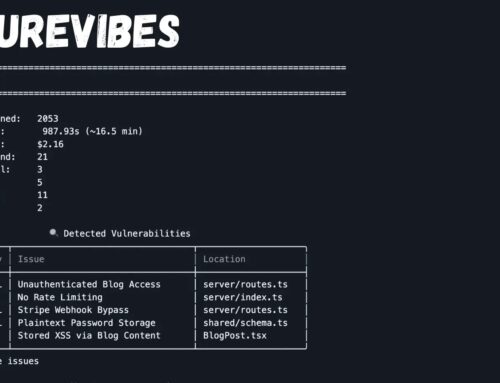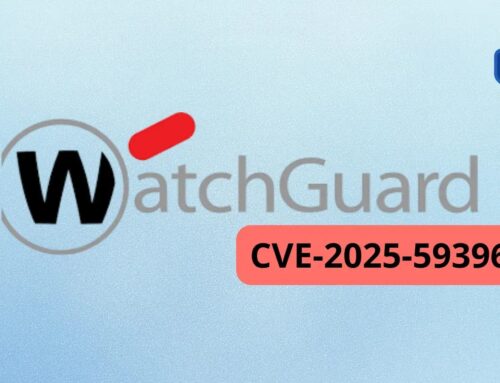
Weaponized NuGet Packages Inject Time-Delayed Destructive Payloads to Attack ICS Systems
The Silent Sabotage: Weaponized NuGet Packages Target Critical ICS Systems
The digital landscape is a constant battleground, but few threats loom as large as those targeting industrial control systems (ICS). These systems form the backbone of our critical infrastructure, from power grids to water treatment plants. A new and insidious supply chain attack has emerged, meticulously crafted to compromise these vital operations through seemingly innocuous software components: NuGet packages.
This report delves into a sophisticated campaign that weaponized NuGet packages, injecting time-delayed destructive payloads designed to cripple ICS environments. This isn’t just about data breaches; it’s about the potential for real-world physical disruption and significant societal impact.
The Anatomy of a Sophisticated Supply Chain Attack
On November 5, 2025, cybersecurity researchers uncovered a disturbing development. Nine malicious NuGet packages, published under the alias “shanhai666” between 2023 and 2024, were identified as conduits for destructive attacks. These packages, deceptively benign in appearance, had accumulated nearly 9,500 downloads, indicating a widespread potential for compromise.
The vector for this attack is a common and trusted component in the .NET development ecosystem: NuGet. Developers frequently incorporate open-source and third-party NuGet packages to accelerate development. The malicious actors exploited this trust by injecting backdoors and destructive code into seemingly legitimate packages. This technique, known as a supply chain attack, allows adversaries to compromise targets indirectly by subverting the software development lifecycle.
Time-Delayed Destructive Payloads: A Ticking Time Bomb
What makes this attack particularly insidious is the use of time-delayed destructive payloads. Unlike immediate attacks that are quickly detected, these payloads lie dormant within compromised systems, awaiting a predetermined trigger. This delay affords the attackers several advantages:
- Evasion of Detection: The initial installation of the malicious package appears harmless, bypassing immediate security scans.
- Wider Propagation: The dormant payload can spread deeper into the target’s infrastructure before activation.
- Maximized Impact: The attackers can choose the optimal time for activation, potentially coinciding with periods of reduced vigilance or heightened system criticality, maximizing disruption.
The ultimate goal of these payloads is to inject destructive capabilities into critical ICS infrastructure. This could range from data corruption and system disablement to physical damage of industrial equipment, leading to significant operational downtime, safety hazards, and economic losses.
Targeted Systems and Potential Impact
The focus on ICS systems is not arbitrary. These environments are often characterized by:
- Legacy Systems: Many ICS networks utilize older software and hardware that may lack modern security features.
- Operational Continuity over Security: The priority is often to maintain continuous operation, making patching and updates challenging.
- Air-Gapped Misconceptions: While some ICS are “air-gapped,” this doesn’t guarantee immunity, especially with sophisticated supply chain attacks.
A successful attack using these weaponized NuGet packages could have catastrophic consequences, including:
- Power Grid Disruptions: Leading to widespread blackouts and infrastructure failures.
- Water Treatment Plant Contamination: Posing serious public health risks.
- Manufacturing Halt: Causing significant economic damage and supply chain interruptions.
- Safety Hazards: If critical safety systems in industrial facilities are compromised.
Remediation Actions and Proactive Defense
Defending against such sophisticated supply chain attacks requires a multi-layered approach and a proactive security posture. Organizations, particularly those operating ICS environments, must implement robust measures to mitigate these risks. There is currently no specific CVE associated with these particular weaponized NuGet packages, highlighting the evolving nature of such threats and the difficulty in assigning formal identifiers to rapidly emerging malicious components in package repositories.
Immediate Actions:
- Audit NuGet Dependencies: Immediately review all NuGet packages used in your projects, especially those deployed in ICS-related software. Identify any packages published by “shanhai666” or other suspicious entities.
- Isolate and Analyze Suspect Systems: If any suspicious packages are identified, the affected systems must be immediately isolated from the network for thorough forensic analysis.
- Rebuild from Trusted Sources: Rebuild applications and systems from known good sources, ensuring all dependencies are verified and free of malicious code.
Long-Term Strategic Defenses:
- Implement Strict Supply Chain Security:
- Package Origin Verification: Verify the source and integrity of all third-party libraries and packages before incorporation.
- Code Signing: Encourage and enforce the use of code signing for all internal and external software components.
- Automated Scanning: Utilize automated tools to scan all incoming packages for known vulnerabilities and malicious code.
- Software Bill of Materials (SBOM) Generation: Maintain a comprehensive SBOM for all deployed applications. This provides crucial visibility into all components within your software stack.
- Least Privilege Principles: Apply the principle of least privilege to development environments and runtime systems, limiting the potential impact of a compromise.
- Network Segmentation: Implement strong network segmentation within ICS environments to contain potential breaches and prevent lateral movement of attackers.
- Continuous Monitoring and Threat Intelligence: Employ robust security monitoring tools across your development and operational environments. Stay informed about the latest threat intelligence, including newly identified malicious package campaigns.
- Developer Education: Educate developers on secure coding practices, the risks of using unverified third-party components, and how to identify suspicious packages.
Detection and Mitigation Tools
Effective defense against weaponized NuGet packages involves a combination of preventative measures and a reliance on specialized tools for continuous monitoring and analysis.
| Tool Name | Purpose | Link |
|---|---|---|
| Software Composition Analysis (SCA) Tools (e.g., OWASP Dependency-Check, Snyk, Black Duck) | Identifies open-source components, their licenses, and known vulnerabilities within your application’s dependencies. | OWASP Dependency-Check |
| Static Application Security Testing (SAST) Tools (e.g., SonarQube, Checkmarx, Fortify) | Analyzes source code for security vulnerabilities and potential backdoor injections without executing the code. | SonarQube |
| Dynamic Application Security Testing (DAST) Tools (e.g., OWASP ZAP, Burp Suite) | Tests the running application for vulnerabilities by actively attacking it, simulating real-world attacks. | OWASP ZAP |
| Endpoint Detection and Response (EDR) Solutions | Monitors endpoint and network events to detect and respond to suspicious activities, including payload activation. | Various Vendors (e.g., CrowdStrike, SentinelOne) |
| Network Intrusion Detection/Prevention Systems (NIDS/NIPS) | Monitors network traffic for signs of malicious activity, unauthorized communication, or command-and-control (C2) callbacks from compromised systems. | Various Vendors (e.g., Snort, Suricata) |
Conclusion
The emergence of weaponized NuGet packages targeting ICS systems represents a significant escalation in supply chain attacks. The use of time-delayed destructive payloads underscores a clear intent for deep infiltration and catastrophic impact. Organizations can no longer afford to treat common development components as implicitly trustworthy. A rigorous approach to software supply chain security, built on verification, continuous monitoring, and developer education, is paramount. Proactive defense and immediate remediation actions are not just recommendations; they are critical safeguards against potential industrial sabotage and widespread societal disruption.





